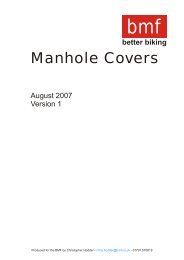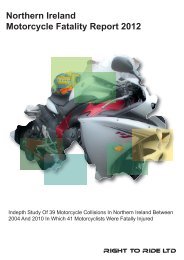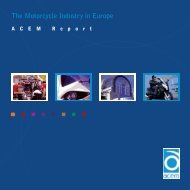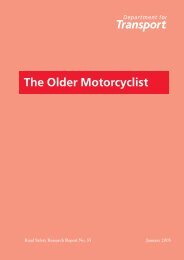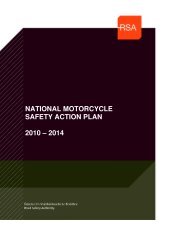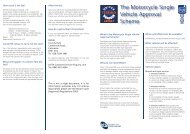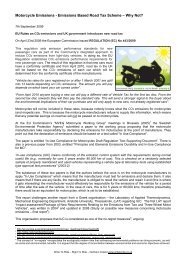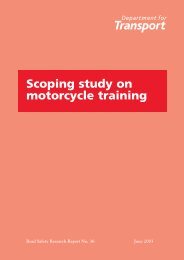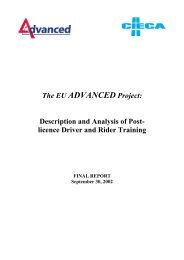Vehicle Parking Standards - Southend-on-Sea Borough Council
Vehicle Parking Standards - Southend-on-Sea Borough Council
Vehicle Parking Standards - Southend-on-Sea Borough Council
- No tags were found...
You also want an ePaper? Increase the reach of your titles
YUMPU automatically turns print PDFs into web optimized ePapers that Google loves.
ESSEX PLANNING OFFICERS ASSOCIATION<str<strong>on</strong>g>Vehicle</str<strong>on</strong>g> P arking <str<strong>on</strong>g>Standards</str<strong>on</strong>g>August 2001USE CLASS C1 - HotelsUSE CLASS C3 - Dwelling Houses●Use as a hotel or boarding or guest house where, ineach case, no significant amount of care is provided(including Motels)Note: For hostels, see <str<strong>on</strong>g>Standards</str<strong>on</strong>g> outside Use Classes Order<strong>on</strong> page 11.●●●Use as a dwelling house(whether or not as sole main residence):by a single pers<strong>on</strong> or by people living together asa familyby residents living together as a single householdStandard:1 space per bedroom (guest or staff). Provisi<strong>on</strong> is expectedto be less in town centre locati<strong>on</strong>s.Note: A lower provisi<strong>on</strong> may be appropriate in town centrelocati<strong>on</strong>s where there is good access to alternative formsof transport and existing car parking facilities.Justificati<strong>on</strong>:1987 Essex <str<strong>on</strong>g>Standards</str<strong>on</strong>g> represented as maximum provisi<strong>on</strong>.USE CLASS C2 - Residential Instituti<strong>on</strong>s●●●for the provisi<strong>on</strong> of residential accommodati<strong>on</strong> andcare to people in needhospital or nursing homeresidential school, college or training centreStandard:Residential care home 1 space per resident staff +1 space per 3 bed spaces /dwelling unitsHospitals 1 space per 4 staff +1 space per 3 daily visitorsResidential educati<strong>on</strong>establishments 1 space per resident staff +1 space per 2 other staff(any parking for students with vehicles should be providedwithin this figure)Note: A Transport Assessment may be required for newor extended development of 2,500m 2 and above.Justificati<strong>on</strong>:● Residential care home: 1987 Essex <str<strong>on</strong>g>Standards</str<strong>on</strong>g>represented as maximum● Hospitals: PPG13 standard. To be applied above ANDbelow recommended threshold (2,500m 2 ) particularlywhere developments below this figure are extensi<strong>on</strong>sto existing premises.● Residential educati<strong>on</strong> establishments: Adapted fromPPG13 standard for further and higher educati<strong>on</strong>.Standard / Justificati<strong>on</strong>:PPG3 advocates an average off-street parking provisi<strong>on</strong>of 1.5 spaces per dwelling as a maximum that should beprovided, particularly in urban locati<strong>on</strong>s. With high densitydevelopments in high accessibility areas such as towncentres, local authorities are encouraged to allow developmentwith little or no off-street parking, subject to the safeguardingof the character and appearance of the area.The plan area is of a diverse nature and to impose a uniformstandard would not be possible or desirable. It also has tobe acknowledged that government statements do not seekto restrict the ownership of private cars but offer alternativesto their use. This raises other issues that need to be takeninto account when applying the standards.Too rigid applicati<strong>on</strong> of maximum standards, in existing residentialareas, could result in <strong>on</strong>-street parking raising issuesof pedestrian safety and possible obstructi<strong>on</strong> for emergencyservices. Also, the impact <strong>on</strong> the living envir<strong>on</strong>ment must bec<strong>on</strong>sidered.N<strong>on</strong>etheless, local authorities would be expected to applyrestraint where possible. In the case of major new developments,an average of 1.5 spaces over an estate may bepossible.For main urban areas and locati<strong>on</strong>s where access to publictransport is good, a maximum of 1 space per dwelling isappropriate. Where an urban locati<strong>on</strong> has poor off-peakpublic transport services, a maximum of 2 spaces perdwelling is appropriate.In rural or suburban locati<strong>on</strong>s where services are poor, amaximum of two spaces for three bedroom properties anda maximum of three spaces for four bedroom propertiesis appropriate.page nine




